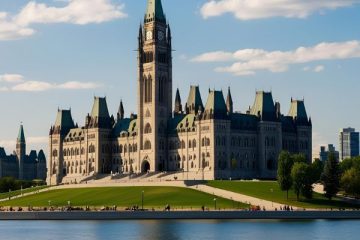Canada’s Family Doctor Crisis

Canada’s Family Doctor Crisis and Retiree Healthcare: Who’s Covered, Who’s Not, and What Comes Next
Introduction
Canada’s healthcare system is free — but not flawless. Millions of Canadians are feeling the pressure of a growing crisis: a national shortage of family doctors. At the same time, retirees are struggling to access affordable, consistent healthcare, especially as they age and their medical needs increase.
This blog covers three urgent questions:
- Are we running out of family doctors in Canada?
- How many Canadians still have access to one?
- And for retirees — which provinces offer the most affordable and accessible healthcare?
Let’s break it all down.
1. Is Canada Facing a Shortage of Family Physicians?
Yes. Canada is in a full-blown family doctor shortage.
Key Data:
- Canada needs tens of thousands more primary care doctors to meet growing demand.
- Retirement among existing physicians is accelerating.
- Fewer medical students are choosing family medicine.
- Many doctors are quitting early due to burnout, red tape, and low pay.
This is not a regional problem. It’s coast to coast.
Why the Shortage Exists
- Family medicine pays less than specialties.
- Workload is insane — some family docs juggle 2000+ patients.
- Mountains of paperwork drain energy and time.
- Doctors aren’t distributed evenly — rural and remote areas get hit hardest.
The result? A system that is strained, understaffed, and unable to provide timely care to everyone who needs it.
2. What Percentage of Canadians Have a Family Doctor?
Roughly 85 percent of Canadians say they have a family doctor.
That sounds decent — until you realize:
- That leaves 6.5+ million people without one.
- The shortage is worse in provinces like Quebec and British Columbia.
- Walk-in clinics and ERs are overrun with patients who have nowhere else to go.
And even those who technically “have” a doctor often face ridiculous wait times, with appointments weeks or even months away.
3. Should Canada Import More Doctors?
Short Answer: Yes — but it’s not that simple.
Canada already depends on international medical graduates (IMGs) to staff hospitals and clinics, especially in remote areas.
But here’s the problem:
- Licensing foreign doctors is painfully slow.
- Residency slots are limited and competitive.
- Underemployment is rampant — many qualified IMGs are driving Uber or working in labs.
What We Should Do:
- Cut red tape for licensing foreign-trained physicians.
- Fund more family medicine residencies.
- Fast-track qualified immigrants with real-world experience.
- Support integration through mentorship, language, and placement programs.
The longer we delay, the worse this crisis becomes.
4. Which Provinces Offer the Most Affordable Healthcare for Retirees?
Even though healthcare is publicly funded in Canada, out-of-pocket costs vary widely depending on where you live — especially for retirees who need prescriptions, home care, and long-term services.
Top Provinces for Retiree Healthcare:
1. British Columbia
- PharmaCare adjusts drug costs based on income.
- Seniors’ programs help with medical supplies, home care, and more.
- Great support for low-income older adults.
2. Ontario
- Ontario Drug Benefit covers most drugs for those 65+.
- Dental and vision aid programs available for low-income seniors.
- Access still an issue in some rural regions.
3. Quebec
- RAMQ Drug Plan has income-based co-pays and strong rural support.
- Government-backed home care and affordable services.
4. Manitoba
- Pharmacare kicks in after an income-based deductible.
- Lower cost of living overall.
5. Nova Scotia
- Seniors Pharmacare Program covers most drugs affordably.
- Decent access to home and community-based care.
Least Affordable Province?
Alberta often ranks lowest for retirees:
- Monthly premiums for extended health.
- Long-term care and home support costs more.
- Retirees face gaps in coverage if not on a supplemental plan.
5. What Needs to Change?
If Canada wants to fix this — fast — here’s what must happen:
- Train more family doctors.
- Streamline immigration and licensing for foreign-trained physicians.
- Digitize and automate admin work to prevent burnout.
- Redirect resources to rural and aging populations.
- Support seniors with fair, province-wide drug and care plans.
Conclusion: The System Is Cracking — But It’s Fixable
Canada is not just short on doctors. It’s short on strategic planning and urgent action.
Millions of Canadians — especially retirees — are waiting for care that should be routine. While 85 percent still have a family doctor, that number is slipping fast. And if you’re living in the wrong province, healthcare in retirement could cost you more than you expect.
The government must act. Fast-track immigration. Expand training. Rebalance provincial policies.
Because a world-class healthcare system doesn’t mean much if you can’t see a doctor when you need one.
Want more AI-driven finance tips? Subscribe to our blog and stay ahead of the game!
Disclaimer: This blog article is for informational purposes only and should not be considered financial advice. Everyone’s financial situation is unique. Always consult with a qualified financial advisor or planner to assess your individual circumstances before making financial decisions


0 Comments